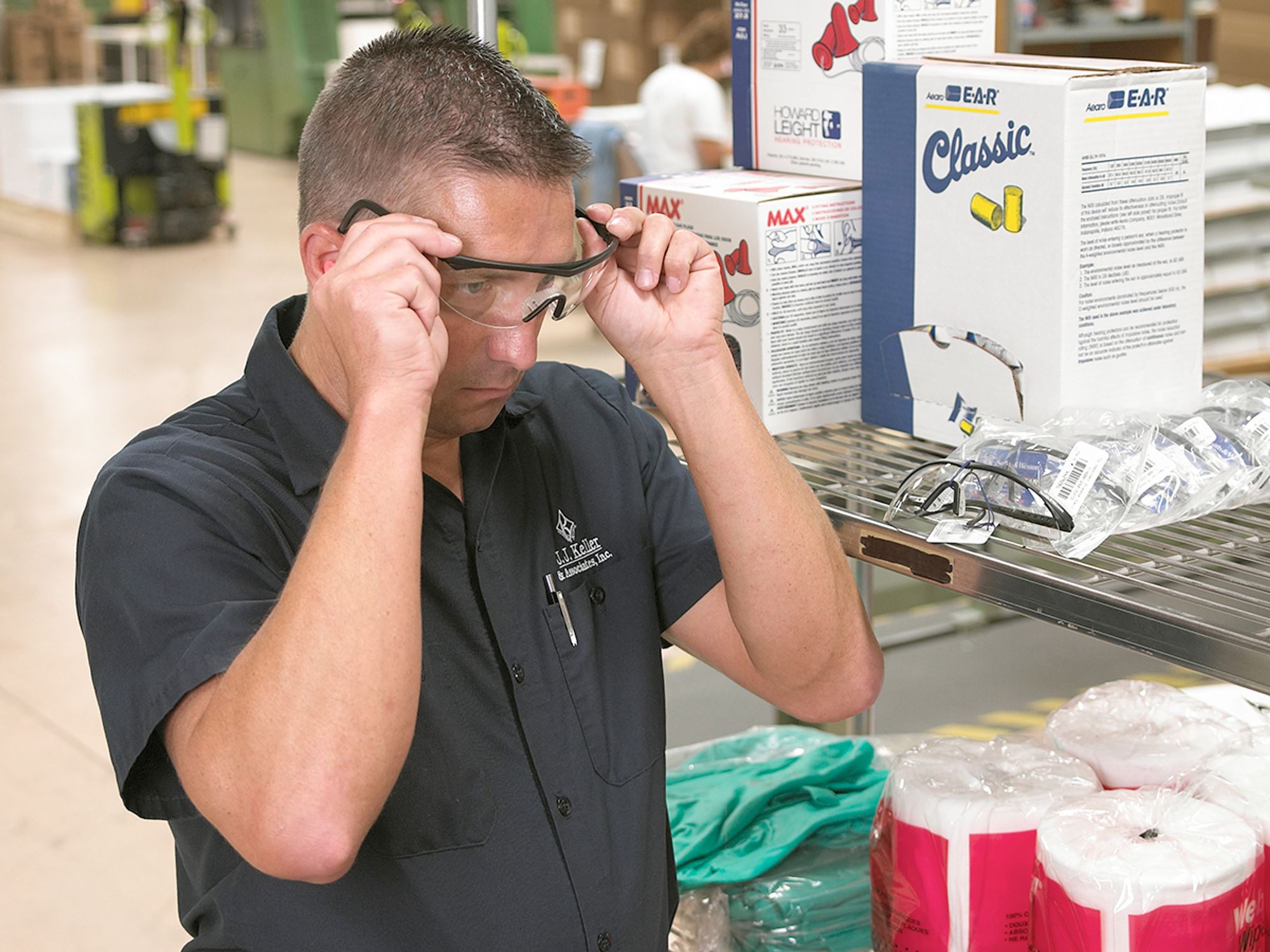PPE for eye and face protection

- The OSHA standard for eye and face protection applies to all General Industry employers whose employees are exposed to certain hazards in the workplace.
- Employers must provide eye and face protection at no cost to employees and visitors whenever certain hazards are present.
- Eye and face protection must meet one of three editions of ANSI Z87.1 (2010, 2003, or 1989-Rev1998)
Eye and face protective equipment is required by the Occupational Safety and Health Administration (OSHA) where there is a reasonable probability of preventing injury when such equipment is used. Employers must provide a type of protector suitable for the work to be performed, and employees must use the protectors. These stipulations also apply to supervisors and management personnel and should apply to visitors while they are in hazardous areas.
Employees must use appropriate eye or face protection when exposed to eye or face hazards from flying particles, molten metal, liquid chemicals, acids or caustic liquids, chemical gases or vapors, or potentially injurious light radiation. Eye protection with side protectors is required where there is a hazard from flying objects. Workers who wear contact lenses must wear eye protection over the lenses. Eye and face PPE must be distinctly marked to identify the manufacturer. Filtered lenses should always be the appropriate shade number for the work being performed.
The OSHA standard number for eye and face protection is 1910.133.
What are the PPE requirements for eye and face protection?
The Occupational Safety and Health Administration (OSHA)’s eye and face protection requirement applies to all General Industry employers who have employees exposed to flying particles, molten metal, liquid chemicals, acids or caustic liquids, chemical gases or vapors, or potentially injurious light radiation.
Who must comply?
For eye and face protection, OSHA requires employers to:
- Assess the workplace and determine if hazards that necessitate the use of eye and face protection are present or are likely to be present.
- Select eye/face protection suitable to the hazard (e.g., impact, chemicals, dust) that meets one of three editions of American National Standards Institute (ANSI) Z87.1 (2010, 2003, and 1989-Rev1998).
- Ensure employees use eye protection that provides side protection when there is a hazard from flying objects. Detachable side protectors (e.g., clip-on or slide-on side shields) are acceptable.
- Provide eye/face protection at no cost to the employee, except for non-specialty prescription safety eyewear — provided it is allowed to be worn off the job.
- Ensure employees who require corrective lenses either use goggles/spectacles over their regular glasses, or use safety eyewear incorporating the prescription.
- Train employees on how to use, care for, and inspect their eye/face protection.
